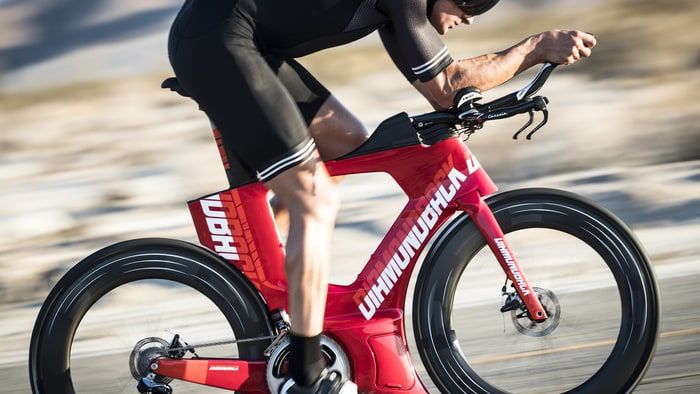Beyond BMX: Diamondback Releases the Ultimate Triathlon Bike
A contender for the title of world's fastest bike has come from an unlikely source: Diamondback Bicycles. Yes, it's that same brand whose BMX rigs you were crashing into curbs a few decades ago. The company has since expanded into competitive and casual bikes of all walks, and recently it's been pushing the aerodynamic limits of time trial and triathlon bikes. In 2014, Diamondback launched its UCI-approved Serios time trial bike. That approval, which restricts frame tube shapes, meant the frame could be used in sanctioned road racing time trials, but it left triathletes (not subject to the same equipment rules) at a disadvantage. In Diamondback's new Andean, they threw out the UCI's rules and decided to see how far they could push bike frame design for triathletes.
How to Buy a Road Bike for Less Than $1,000
Instead of adapting the Serios — which excels against other UCI-approved bikes like the Cervelo S5 — for triathlons with minor gear upgrades, the team at Diamondback used what it had learned in the Serios's development to fuel a completely new frame. Diamondback also collaborated with the University of Toronto Institute for Aerospace Studies (UTIAS) for development and testing. The company says teaming up with aerospace graduate students gave the cycling engineers a fresh take on the problem of wind drag.
Working with UTIAS's wind tunnel, Diamondback and the students tested half-scale frame models — complete with a rider — to slowly dial in the tube shapes over dozens of variations and across multiple wind angles to simulate real-world conditions. Even more practical: Instead of focusing on the aerodynamics of each frame tube, the team looked at the bike as a whole and designed the front tubes to aide the airflow around the rear of the bike. This led to design choices like eliminating the seatstays, the support tubes connecting the rear hub to the seatpost junction. Diamondback found that they made significant drag reductions despite the need to reinforce the chainstays — now the only tubes connected to the rear wheel.
There's more to winning a race than pure aerodynamics, so Diamondback worked with pro triathletes like Michi Weiss (who'll be racing the Kona Ironman on the Andean) to make sure they met racers' other needs — namely storage. Simply having spots for gear and nutrition is a common oversight on most tri bikes, despite the 112-mile cycling leg of an Ironman. The Andean's top tube storage can hold, for example, two energy bars, 10 gels, and a package of salt tablets. Plus there's a small space to store wrappers. There's also room for a couple of spare tubes behind the seatpost, and then a compartment in the massive downtube for multiple tools and inflators.
The Andean is available direct from Diamondback in five complete builds ranging from $4,780 to $8,070. Despite the large frame, Diamondback says that built up with SRAM Red e-Tap and HED JET 9 wheels, the Andean weighs in at 20.5 pounds. While that is a few more pounds than a high-end road bike, the weight difference is akin to what you might put down at a pre-race dinner. [Starts at $4,780; diamondback.com]
